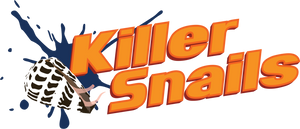Research Process of Venom CoLab

Killer Snails has always been interested in using technology to help students see themselves as scientists, create engaging experiences, and bring something new to the classroom. How do we turn the promises of new features into valuable educational experiences that work for the students and teachers using them? Coordinating design, development, and research to iterate on ideas and evidence is fundamental to our process, and has been especially impactful while developing Venom CoLab.
In Venom CoLab, groups of up to 4 students take on roles as scientists studying venom to find a new treatment for health problems like cancer, autoimmune disorders, blood clotting, and pain. All of the material is based on real research and potential treatments inspired by venom. As a classroom experience, we had to ensure that the platform would work on common hardware like Chromebooks and often spotty wifi, would be functional from a practical perspective, and support ambitious educational goals like practicing collaboration skills.
Our research process uses the Successive Approximations Model (Allen & Sites, 2012) as a framework for going from initial idea, to increasingly high-fidelity prototypes. Our process also draws from user-centered design and design-based research to go beyond usability testing, and into substantive co-design with the teachers and students who will be using our work in classroom settings.

( Successive Approximations Model for Designing and Developing Immersive STEM Experiences (adapted from Allen & Sites, 2012)
To make this vision into reality, we try to get material in front of students and teachers as early and often as possible. This means first meeting with teachers to review ideas for activities and learning objectives throughout the development process.
Then, we get prototypes in front of students in one-on-one sessions where they may be testing a low-fidelity paper prototype of an activity, or a functional but incomplete digital prototype. We observe what students are doing, and ask questions like “Why did you choose that option?”, “What do you think is important here?” or “What do you think you should do next?” We also ask students to ‘think out loud’ throughout their interactions, which can be very helpful in spotting misconceptions or times when our intentions for the design are not being met. These user tests can be a challenge for students who are invested in, and experts at, completing schoolwork perfectly. We emphasize that unlike an assignment for class, this is a test of the product, and not the student – they are helping us find the mistakes that we made, and by telling us when anything doesn’t work the way they expect it to, they’re helping us make Venom CoLab better for other students.
As a collaborative experience where students work together and the experience builds on itself over the course of 5 chapters, we had to modify our research process for Venom CoLab to account for activities that relied on group participation, and the cumulative nature of the material. Separating the mixture of peptides and protein in a sample of venom in Chapter 2 wouldn’t make sense if the students hadn’t collected a sample in Chapter 1! We worked closely with one group of students over a year to try out each chapter as it developed, building and iterating on their feedback as we continued developing new content. Once we had working versions of all 5 chapters, we gathered additional groups of students to work together over a few sessions during a week, similarly to how school groups would experience Venom CoLab.
After one-on-one and small group testing with students shows that the activities are functional and accomplish our learning objectives, we bring high-fidelity early versions of chapters into classrooms with our partners like schools in Manhattan, Newark, NJ, and summer camps at the American Museum of Natural History. These tests quickly reveal how different groups of students work together, and whether our activities are robust enough to work in classrooms. We also debrief these sessions with teachers, who can reflect on whether their students’ performance was typical for them. One comment we’re always excited to hear is when students who are not typically engaged in class seemed to take an interest in the day’s activities. These kinds of observations and insights from teachers help us further refine each interaction, activity, and product design to meet the needs of all students.
Finally, pushing the boundaries of what technology can do in educational settings is a tall order, but at Killer Snails, it’s not enough to show that the products technically work – we want to know that teachers and students find our material satisfying to use, and that students learn by interacting with our products. Our evaluation partners, Marcy Peak, have been conducting a randomized control trial to test how students’ content knowledge and other indicators may change after using Venom CoLab. Initial results are promising! We are excited to share the final report later this year.

